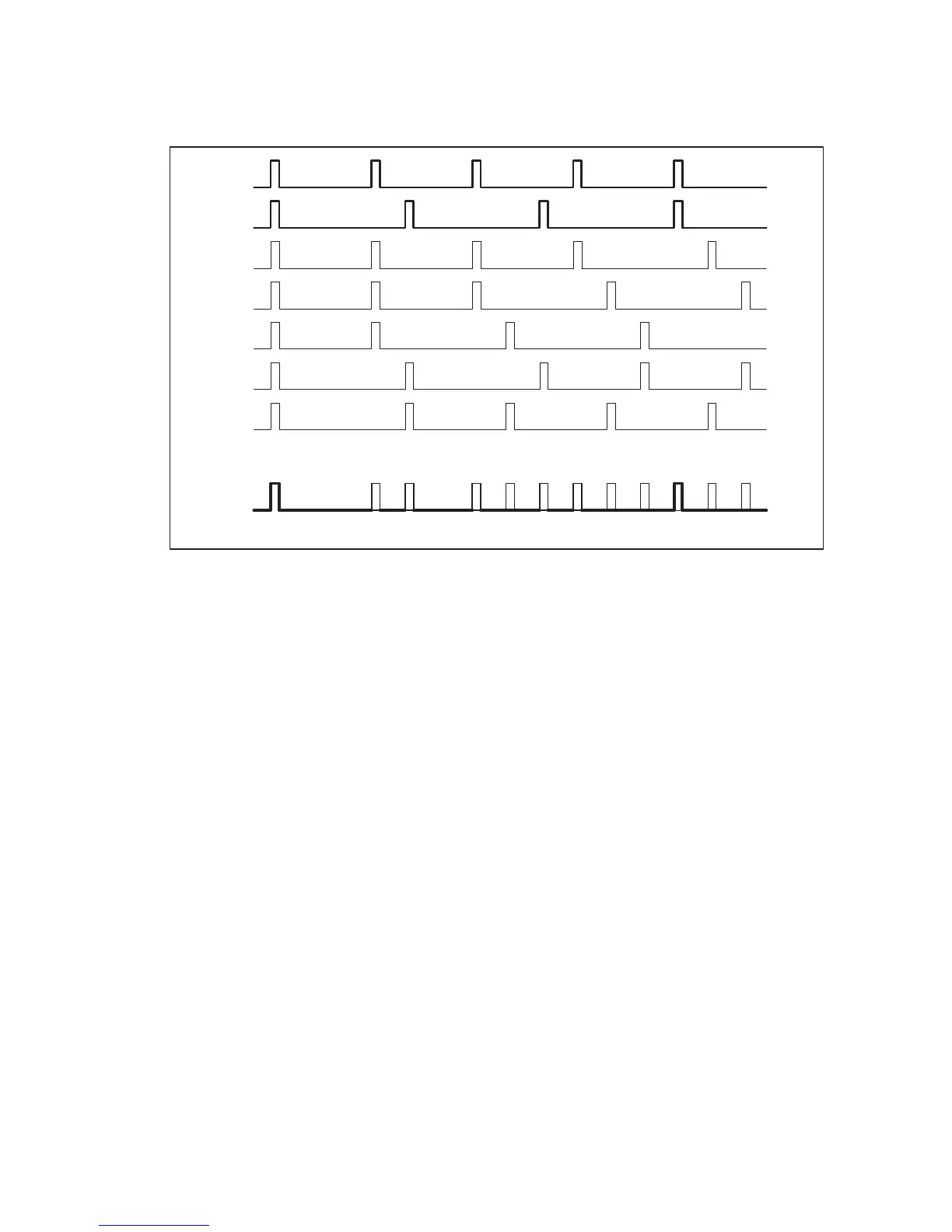Chapter 6 ______________________________________________________ Processing Algorithms
VAISALA______________________________________________________________________ 247
0916-064
Figure 52 Example of Dual PRF Trigger Waveforms
6.8 Random Phase Second Trip Processing
6.8.1 Overview
Second trip echoes can be a serious problem for applications when the
radar is operated at high PRF (for example, >500 Hz). Second trip echoes
are caused by the range aliasing of targets. They appear as false echoes on
the display, usually elongated in the radial direction. On Klystron systems
they will have valid Doppler velocities. On magnetron systems, the
Doppler velocities are not valid, but the noise from the 2nd trip echoes can
obscure valid first trip velocity information.
The RVP900 has optional random phase processing for the filtering and
recovery of second trip echoes. Details of the technique are proprietary to
Vaisala, Inc. However, the general principle is described here, along with
a discussion of the various configuration options to optimize the algorithm
performance.
The information that is used to separate the first and second trip echoes is
the phase. For a magnetron radar, the phase of each pulse is different. This
means that when 1st. and 2nd trip echoes are received simultaneously, the
47.0%
47.3%
1.0%
1.0%
1.0%
1.3%
1.3%
SCOPE
100% 50% 50% 49% 2.3% 48.6% 48% 2.3% 2.3% 94.3% 2.3% 2.3%

